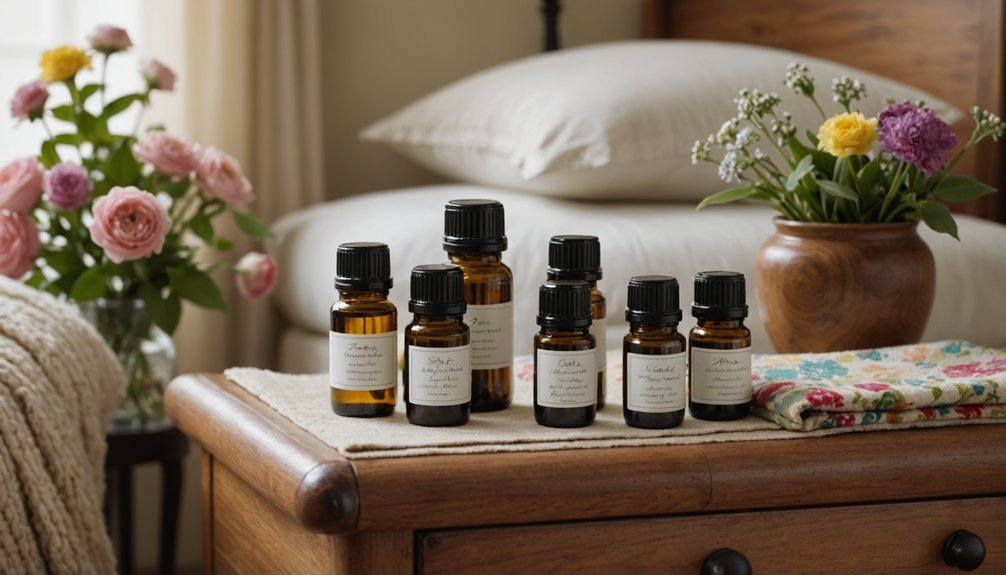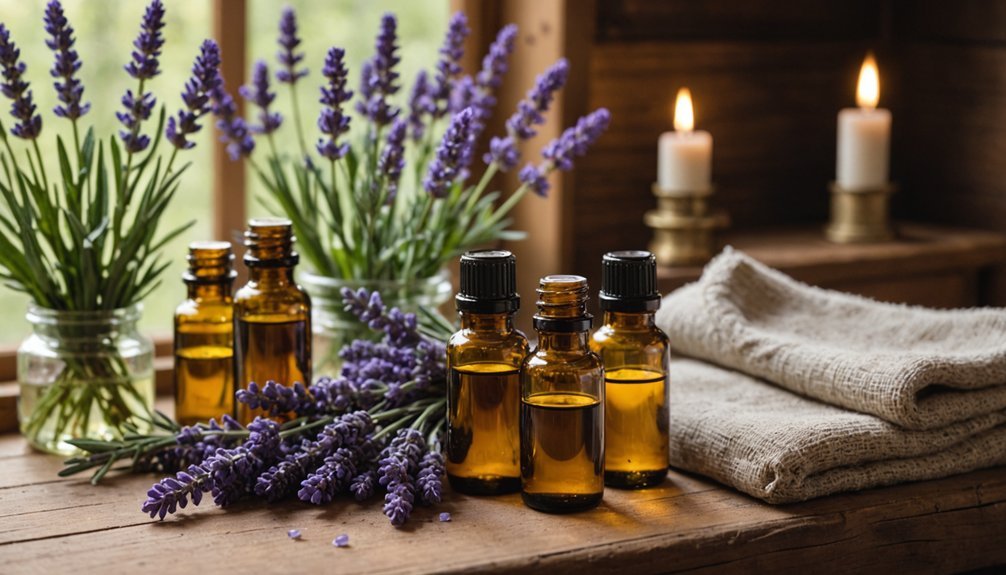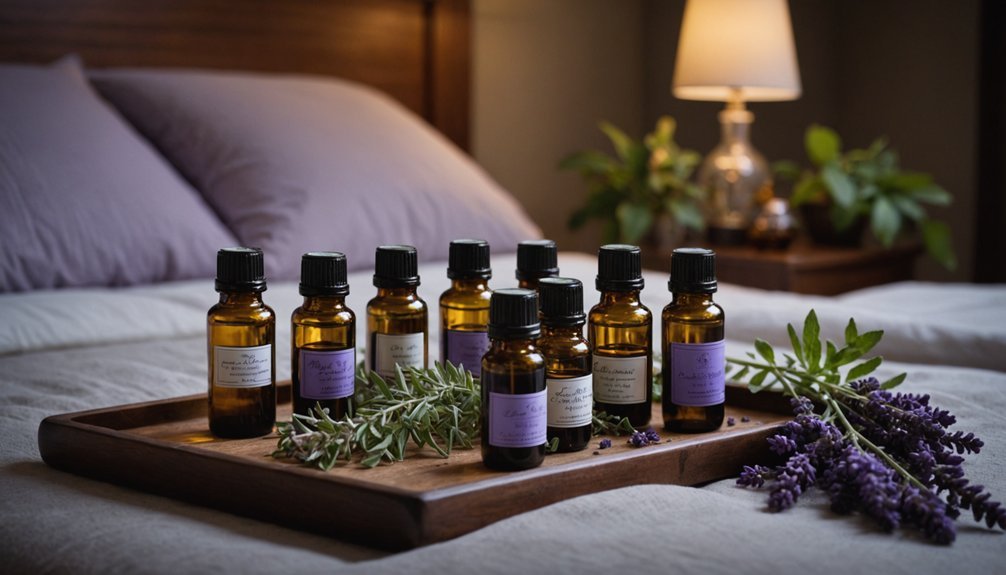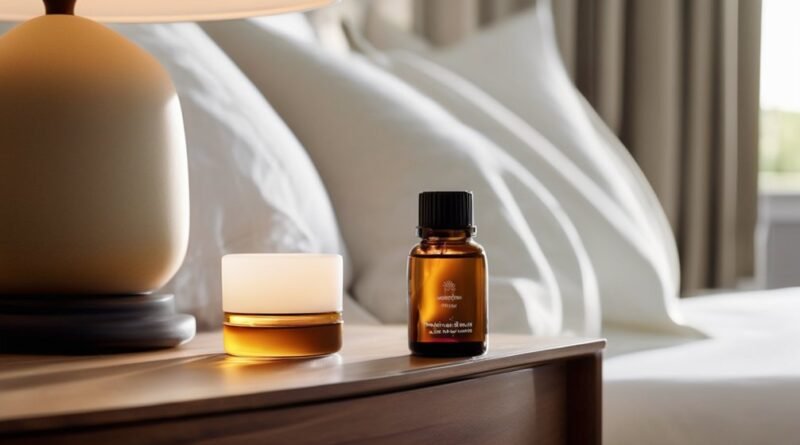Best Essential Oils for Bed Bugs: Do They Work?
If you’re battling bed bugs, you’ve likely heard about essential oils as a natural solution. While these aromatic compounds won’t replace professional pest control, recent studies suggest they’re more than just pleasant scents. Oils like clove, thyme, and oregano can disrupt bed bugs’ nervous systems and reduce infestations considerably. Before you stock up on essential oils, though, you’ll need to understand their real capabilities and limitations.
Key Takeaways
- Essential oils like clove, red thyme, and oregano can kill up to 90-93% of bed bugs through their active compounds carvacrol and thymol.
- Essential oils work by disrupting bed bugs’ nervous systems, causing paralysis and death, while also repelling them from treated areas.
- Complete bed bug elimination occurs in only 22% of cases using essential oils alone, requiring integration with other pest control methods.
- Daily application for 7-10 days is necessary, using proper dilution ratios of 1-3% essential oil with carrier oils like coconut or jojoba.
- Essential oils show lower resistance development than traditional insecticides and can enhance the effectiveness of conventional pesticide treatments.
Understanding Bed Bug Control Challenges

While bed bugs have plagued humans for centuries, today’s control challenges are more complex than ever. You’re facing insects that have developed strong resistance to many insecticides, making traditional treatments less effective.
These resilient pests can hide in the tiniest cracks of your furniture and walls, surviving for months without feeding. Pest control professionals say bed bugs are the hardest pest to eliminate in 68% of cases.
If you live in an urban area or apartment building, you’re at higher risk since bed bugs easily spread between units. Detection is particularly challenging because they’re nocturnal and excellent at concealing themselves. You mightn’t notice an infestation until it’s well established.
The financial burden of treatment hits especially hard if you’re in a lower-income situation, as proper control often requires multiple treatments and environmental modifications.
Most Effective Essential Oil Compounds

Among the numerous essential oil compounds studied for bed bug control, several terpenoids demonstrate exceptional toxicity and repellent properties.
You’ll find carvacrol and thymol, sourced from red thyme and oregano oils, leading the pack with their strong contact toxicity. Geraniol, found in citronella and palmarosa oils, offers both insecticidal and repellent effects. Natural resistance development is significantly lower with essential oils compared to traditional insecticides.
Don’t overlook eugenol from clove oil, which effectively kills and repels bed bugs through its antiseptic properties.
Eugenol extracted from clove oil proves to be a powerful natural solution, both killing and repelling bed bugs effectively.
When combined with synthetic insecticides like deltamethrin, these compounds can boost kill rates from 25-50% to over 90% in resistant bed bugs. They work by inhibiting cytochrome P450 enzymes, making them valuable additions to your bed bug control strategy.
How Essential Oils Fight Bed Bugs

Essential oils combat bed bugs through four primary mechanisms: neurotoxic disruption, physiological interference, behavioral deterrence, and synergistic enhancement of conventional pesticides.
Compounds like eugenol, cinnamaldehyde, and eucalyptol target bed bugs’ nervous systems, causing paralysis and death. They’ll also compromise the bugs’ exoskeleton, leading to fatal dehydration. Natural compounds like diatomaceous earth powder enhance these desiccating effects.
You’ll find these oils interfere with multiple body systems simultaneously, making it impossible for bed bugs to maintain normal function.
The strong scents repel bed bugs from treated areas, though they might still cross these barriers when seeking food.
When you combine essential oils with synthetic insecticides, they boost effectiveness and help overcome resistance.
You can apply these oils through direct contact or fumigation, with compounds like carvacrol and thymol working effectively in both forms.
Real-World Success Rates and Limitations
While you’ll find essential oils can reduce bed bug populations by 90-93% in field studies, complete elimination only occurs in about 22% of treated spaces.
You’ll need multiple treatments over several weeks, making essential oil solutions potentially more expensive than conventional treatments in the long run.
The lack of long-lasting residual effects and need for frequent reapplication create significant challenges for achieving total bed bug control with essential oils alone. Essential oils like thyme and clove work effectively by inhibiting P450 enzymes in resistant bed bugs.
Field Study Control Rates
Recent field studies comparing essential oil-based products to conventional insecticides have revealed mixed results in real-world settings. While you’ll see about 92% reduction in bed bug populations after 12 weeks with either treatment type, complete elimination remains challenging. Only 22% of apartments treated with EcoRaider achieved total eradication. The addition of plant-based essential oils has shown promise in enhancing the effectiveness of traditional pyrethroid treatments.
| Treatment Type | Results Comparison |
|---|---|
| Reduction Rate | Both achieve ~92% |
| Time Frame | 12 weeks |
| Full Elimination | 22% of cases |
| Resident Awareness | Limited detection |
| Overall Efficacy | Moderate control |
These findings suggest that while essential oils can match synthetic insecticides in reducing moderate infestations, they may not be sufficient as standalone solutions. Many residents don’t notice surviving bed bugs, making it difficult to evaluate true elimination success rates.
Cost vs. Complete Elimination
The cost-effectiveness of bed bug treatments can greatly impact your choice between essential oils and conventional insecticides.
While essential oils might seem like a natural, affordable option upfront, you’ll need much higher quantities to match the effectiveness of synthetic pesticides, driving up your overall costs.
Field studies show that essential oil treatments only achieve complete elimination in about 22% of cases, even though they can reduce bed bug populations by up to 92%.
You’ll likely need multiple applications, further increasing expenses.
However, there’s promising evidence that combining essential oils with conventional insecticides can enhance effectiveness while potentially reducing costs.
This synergistic approach might offer you the best balance between eco-friendly treatment and successful elimination, though complete eradication isn’t guaranteed.
Treatment Duration Challenges
Successful treatment of bed bugs with essential oils demands considerably more time and effort than conventional pesticides, largely due to their rapid degradation and limited residual effects.
You’ll need to apply treatments daily or twice daily for 7-10 days, followed by maintenance sprays every 2-3 days.
Real-world results show that even after 12 weeks of consistent application, essential oils typically achieve 92% bed bug reduction, with complete elimination in only 22% of cases.
The oils’ effectiveness is hampered by several factors: they don’t penetrate deep hiding spots well, they break down quickly when exposed to air and light, and bed bugs’ behavior often prevents direct contact with the treatment.
For the best results, you’ll need to integrate essential oils into a broader pest management strategy rather than relying on them alone.
Safe Application Methods and Best Practices
When applying essential oils for bed bug control, you’ll need to carefully follow the product’s specific dilution ratios to guarantee both safety and effectiveness.
You should use a steady, even spray pattern that thoroughly covers potential hiding spots while avoiding oversaturation of surfaces.
For ideal coverage, maintain a consistent distance of 8-12 inches between the spray nozzle and target areas, working methodically from the edges toward the center of infested zones.
Dilution and Safety Ratios
Safe application of essential oils against bed bugs requires proper dilution to prevent skin irritation and surface damage. For most applications, you’ll want to use a 1-3% dilution ratio, which means about 6 drops of essential oil per ounce of carrier oil.
Clove oil works well at a 1:3 ratio with coconut or jojoba oil, while tea tree oil needs 1-2 drops per teaspoon of carrier.
Before applying your diluted mixture, you’ll need to perform two vital safety tests: a spot test on fabric to check for damage, and a skin patch test to guarantee you won’t have an allergic reaction.
Always wear gloves when handling essential oils, and avoid applying them near sensitive areas like eyes and mouth. For children under five, use gentler formulations with dilutions under 1%.
Spray Pattern Application Tips
Once you’ve properly diluted your essential oil mixture, mastering the spray pattern becomes your next key step. Apply a fine mist directly to bed bug hiding spots like mattress seams, bed frames, and baseboards. Shake the bottle well before each use and spray in a well-ventilated room to avoid inhaling strong vapors. Remember to test on a small area first to prevent potential staining.
| Surface Type | Spray Technique | Key Considerations |
|---|---|---|
| Mattresses | Light misting on seams | Avoid saturation |
| Furniture | Target cracks/crevices | Prevent visible streaks |
| Baseboards | Direct spray into gaps | Maximum contact |
| Bedding | Very light barrier spray | Prevent staining |
| Electronics | No direct spraying | Avoid damage |
For best results, reapply every few days and combine with other control methods like laundering and steam cleaning.
Combining Essential Oils With Other Control Methods
Although essential oils can help combat bed bugs on their own, combining them with other control methods greatly improves their effectiveness.
You’ll get better results by pairing essential oil treatments with high-heat washing of bedding and steam cleaning of furniture, as temperatures above 115°F kill both bugs and eggs. Start by vacuuming thoroughly and reducing clutter to remove hiding spots before applying oils.
For maximum impact, combine different essential oils like thyme and oregano, or lavender and tea tree, to create stronger antiparasitic effects.
You can also integrate oils with conventional pesticides, using them as complementary treatments in sensitive areas.
Don’t forget to use mattress encasements and bed leg interceptors alongside your essential oil applications to trap and monitor bed bugs effectively.
Latest Research and Scientific Evidence
Recent scientific studies have revealed the complex mechanisms through which essential oils combat bed bugs. Research shows that compounds like carvacrol, thymol, and eugenol work by disrupting the insects’ nervous systems through both contact and fumigant action. While not as potent as synthetic pesticides, these natural compounds can effectively kill bed bugs when properly applied.
| Essential Oil | Primary Effects |
|---|---|
| Clove Oil | Neurotoxic activity, respiratory disruption |
| Cinnamon Oil | Nervous system damage, dehydration |
| Eucalyptus Oil | Exoskeleton degradation, respiratory stress |
| Citrus Oils | Neurological disruption, reduced mobility |
Most notably, scientists have discovered that essential oils can enhance the effectiveness of conventional insecticides, particularly against resistant bed bug strains. This synergistic effect allows for lower doses of chemical pesticides while maintaining high mortality rates.
Conclusion
You’ll find essential oils can be a valuable part of your bed bug control strategy, but they shouldn’t be your only solution. While oils like clove, thyme, and oregano have proven effectiveness, they work best when combined with other treatments. Use them as part of a thorough approach, following safe application guidelines, and remember that multiple treatments may be necessary for lasting results.

